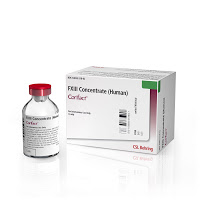Who’s Looking At Your Genes?

A society which respects civil liberty realizes that the freedom of its people is built in large part, upon its privacy. —John Fitzgerald Kennedy
Massachusetts is known for being the birthplace of America, and location of the Revolutionary War. Seems we started another revolution this week. The Forum on Genetic Equity is pushing to pass a MASSACHUSETTS GENETIC BILL OF RIGHTS— a bill to protect information about our genetic make-up, and defects. Think about it: what could employers, insurance companies and others do if they knew about your genetic make-up?
Genetic discrimination could be a true threat to personal freedom and life choices. Databases of genetic information are being compiled daily with few rules to guide their use. The same is true for genetic material; this information could be used to discriminate against people based upon their genetic make-up.
From The Forum on Genetic Equity website: “This legislation marks a major change in the way we think about genetic discrimination. When passed, this legislation will put individuals in control of their genetic material and information.”
And this: “The state action in Massachusetts is credited with being a major factor creating the political environment which made it possible for Congress to enact the Genetic Information Nondiscrimination Act (GINA) in 2008. While GINA is considered by many to have been the single most important civil rights legislation adopted in this new century and makes it illegal to use a person’s genetic information or genetic material as the basis to deny anyone health insurance coverage or employment, technological advances have outstripped both federal and state protections. The MASSACHUSETTS GENETIC BILL OF RIGHTS deepens and broadens individual rights by proactively working to end all forms of genetic profiling while safeguarding individual privacy rights.”
Steve May, executive director, wrote just today, “The response to our last message about the Massachusetts Genetic Bill of Rights has been nothing short of unbelievable. Over the last 72 hours our mailing list has nearly doubled. The public is clearly gaining a sense that the misuse of genetic data is an emerging civil rights concern.”
We respect privacy here at LA Kelley Communications. In fact, there was no HemaBlog yesterday as our website was down for a bit, because we’ve invested in new privacy mechanisms, to protect you when you contact us, browse us or place an order. Privacy is a huge issue. Ensure you know how to protect yours. Check out the website www.GeneticEquity.org today!

 At 19,340 feet, Kilimanjaro is the highest mountain on the African continent and the largest freestanding mountain in the world. And guess what? I am going there in August! I’m actually going to hike it and attempt the summit. Why? Not just because it’s there, but as a fundraiser for Save One Life.
At 19,340 feet, Kilimanjaro is the highest mountain on the African continent and the largest freestanding mountain in the world. And guess what? I am going there in August! I’m actually going to hike it and attempt the summit. Why? Not just because it’s there, but as a fundraiser for Save One Life. The climb is the brainchild of Eric Hill, president of BioRx, a homecare company, and a sponsor of two kids with hemophilia. Last year he, an employee, and a person with hemophilia, Jeff Salantai, climbed Mt. Rainier. That was a highly technical climb, meaning they had equipment, ropes and crampons. Thankfully, Kilimanjaro is not a technical climb, but it’s no walk in the park! With a team of ten, we will trek for 4 days, hopefully summit on the 5th, and then come all the way downhill in one long day.
The climb is the brainchild of Eric Hill, president of BioRx, a homecare company, and a sponsor of two kids with hemophilia. Last year he, an employee, and a person with hemophilia, Jeff Salantai, climbed Mt. Rainier. That was a highly technical climb, meaning they had equipment, ropes and crampons. Thankfully, Kilimanjaro is not a technical climb, but it’s no walk in the park! With a team of ten, we will trek for 4 days, hopefully summit on the 5th, and then come all the way downhill in one long day.




